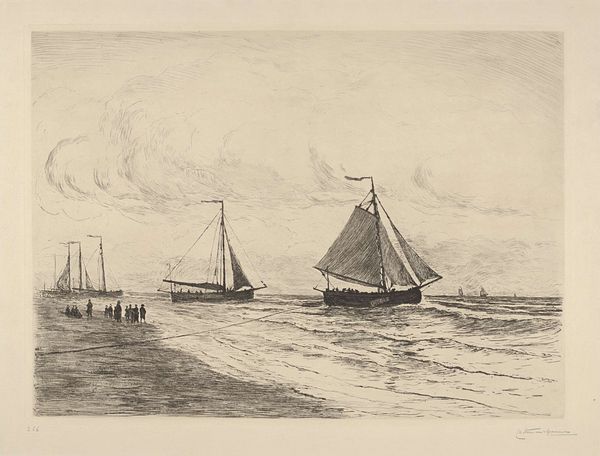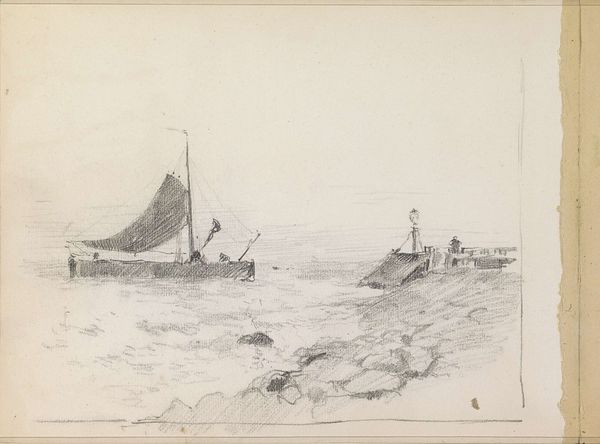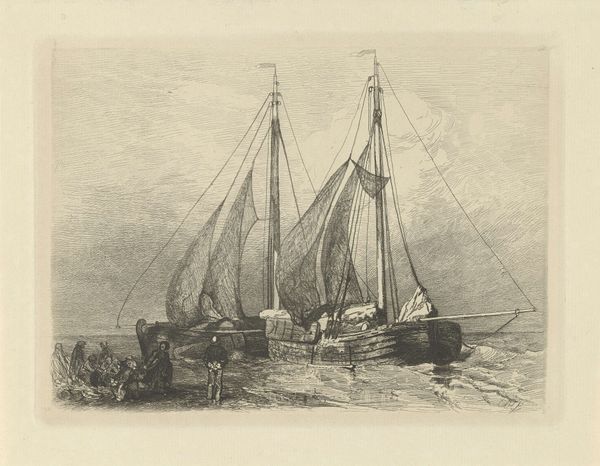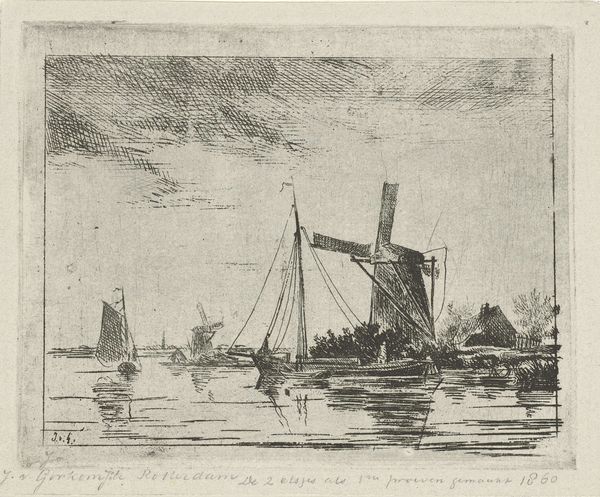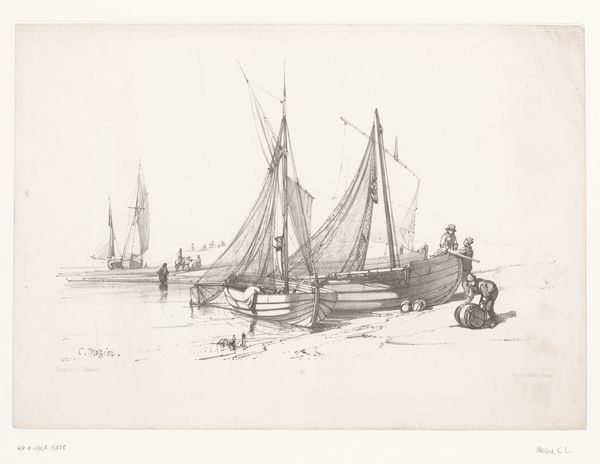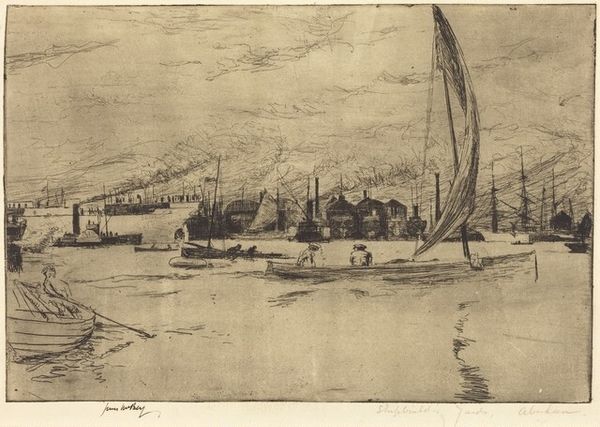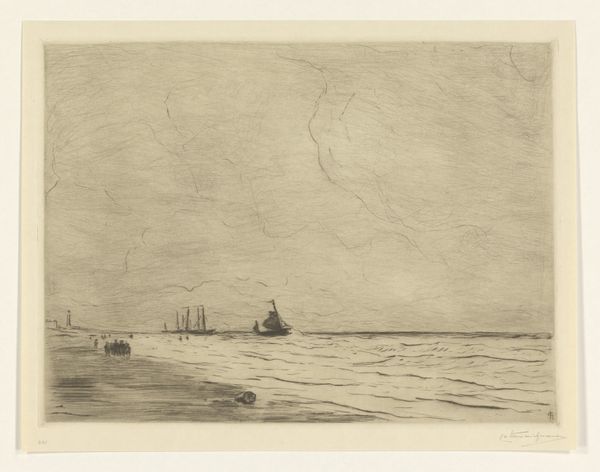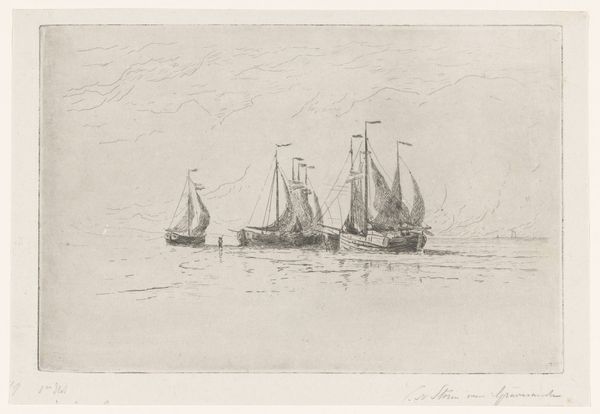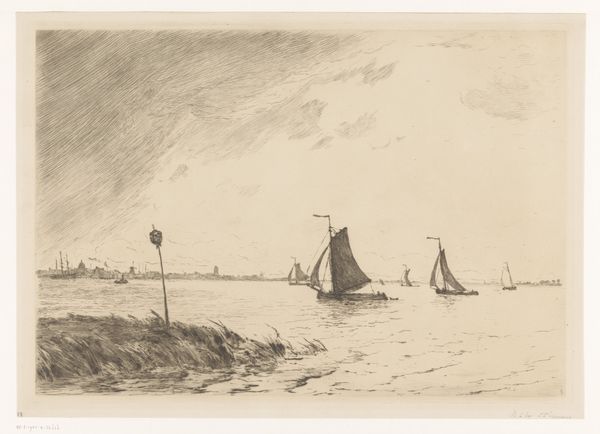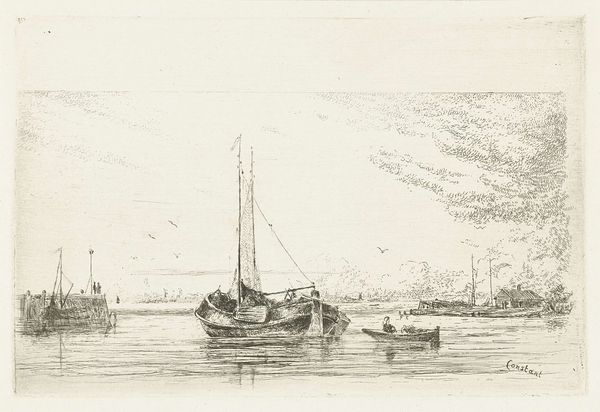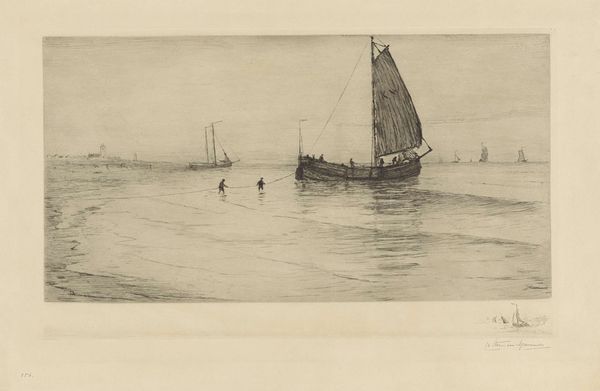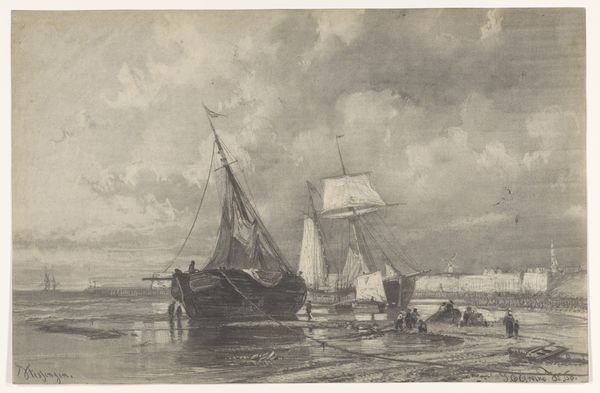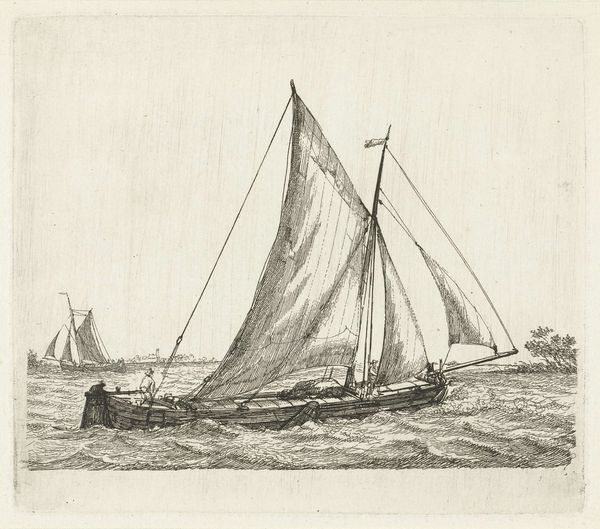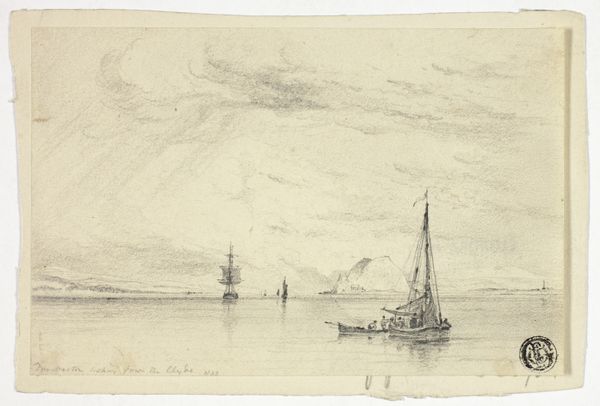
print, etching
#
dutch-golden-age
#
ship
# print
#
etching
#
landscape
#
realism
Dimensions: height 470 mm, width 645 mm
Copyright: Rijks Museum: Open Domain
Curator: This is Carel Nicolaas Storm van 's-Gravesande's "Op het strand bij Katwijk," an etching print dating between 1869 and 1924. Editor: My first impression is of stillness and quiet industry. The muted tones create a somber, almost dreamlike quality. It makes me wonder about the individuals depicted here—are they merely supporting the central motif of vessels as tools? Curator: The strength of this work lies in the artist's masterful use of line and texture, especially with how tonal gradation renders the immensity of space. The vessels appear as sturdy silhouettes, countered against the atmospheric expanse of the sky and reflecting upon the shore with etched linear strokes suggesting light across the damp beach. The application and arrangement serve to create rhythm. Editor: Certainly, technically skilled, but I also wonder about the real Katwijk during this period. A fishing village wrestling with modernization, clinging to tradition while the world rapidly industrializes around it. The image itself reflects a specific moment of labor, and a crucial aspect of the cultural heritage linked to the sea. It evokes the hardship and simple routine that this kind of maritime living dictated to the working-class Dutch population. Curator: True, but look how the composition pushes your eye back into the pictorial space. Observe how he utilizes the cluster of standing figures to mark a meeting point, where water meets sand, connecting the material objects within the work. We could see this intersection in the broader structural context of labor, landscape, and maritime trade itself—but such a framework obscures the very graphic excellence before us! Editor: While I appreciate the construction of pictorial space, I find it hard to ignore how art can become a form of cultural documentation. "Op het strand bij Katwijk" doesn't just offer a pleasing aesthetic; it provides insight into how Dutch society understood and interacted with the sea, shaping labor forces, identities, and even environmental consciousness. What a vessel suggests about Dutch global trading history is an undeniable facet of this and similar works of art, surely. Curator: Perhaps you’re right that historical implications contribute meaning, but the formal properties elicit feeling independent of cultural significance. Nonetheless, your historical perspective enriched my analysis of composition. Editor: And your emphasis on technical execution illuminated aspects I initially overlooked.
Comments
No comments
Be the first to comment and join the conversation on the ultimate creative platform.
